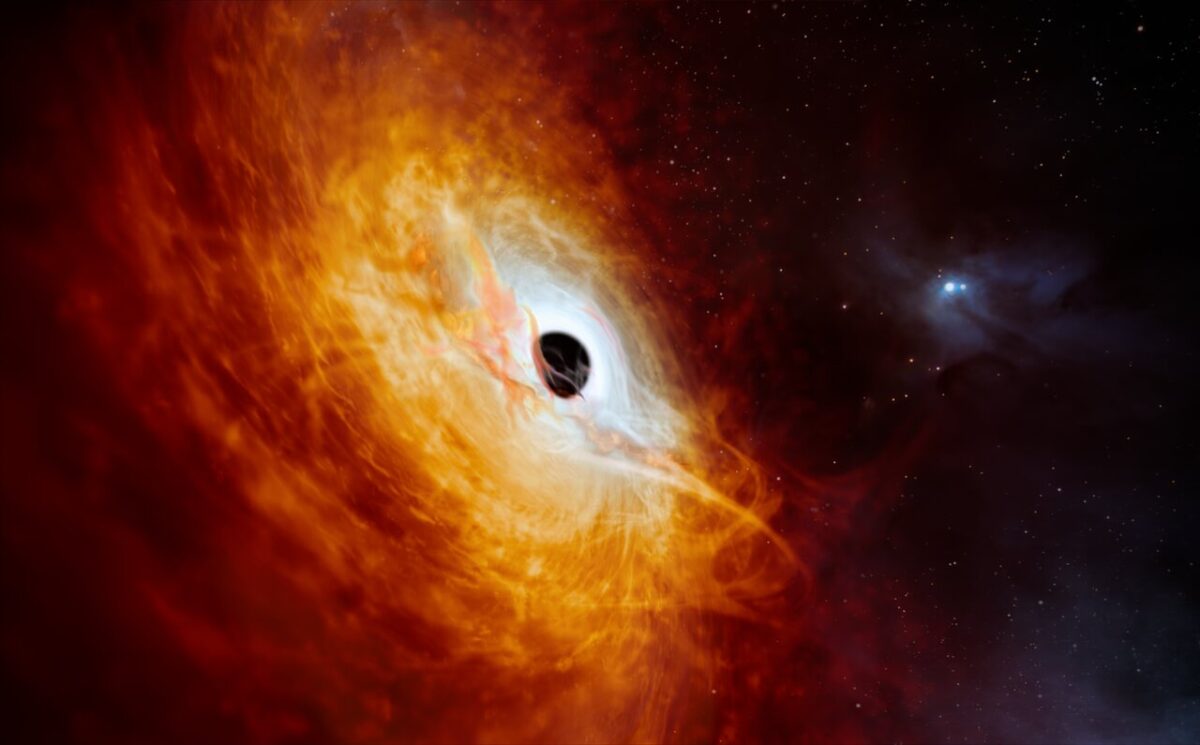A quasar – the most luminous object ever seen – has been discovered in the distant universe. It is the core of a galaxy powered by a black hole that is about 17 billion times the mass of our Sun.
Known by the catchy name of J0529-4351, it was discovered by scientists using the Very Large Telescope in Chile.
Writing in the journal Nature Astronomy, the authors say the black hole consumes a mass the size of the sun every day. But we don’t have to worry as the light from the galaxy took 12 billion years to reach us.
Lead author Associate Professor Christian Wolf from the Australian National University said it’s a record he doesn’t think will ever be beaten.
“The incredible rate of growth also means a huge release of light and heat,” Associate Professor Wolf said. “So, this is also the most luminous known object in the universe. It’s 500 trillion times brighter than our sun.”
Co-author Dr Christopher Onken added: “It’s a surprise it remained undetected until now, given what we know about many other, less impressive black holes. It was hiding in plain sight.”
It was first detected using a 2.3 metre telescope at the ANU Siding Spring Observatory near Coonabarabran in NSW. The research team then turned to one of the largest telescopes in the world – the European Southern Observatory’s Very Large Telescope – to confirm the full nature of the black hole and measure its mass.
“The light from this black hole has travelled over 12 billion years to reach us,” Professor Rachel Webster from the University of Melbourne said.
“In the adolescent universe, matter was moving chaotically and feeding hungry black holes. Today, stars are moving orderly at safe distances and only rarely plunge into black holes.”
The intense radiation comes from the accretion disc around the black hole, which is the holding pattern for all the material waiting to be devoured.
“It looks like a gigantic and magnetic storm cell with temperatures of 10,000 degrees Celsius, lightning everywhere and winds blowing so fast they would go around Earth in a second,” Associate Professor Wolf said.
“This storm cell is seven light years across, which is 50% more than the distance from our solar system to the next star in the galaxy, alpha Centauri.”
